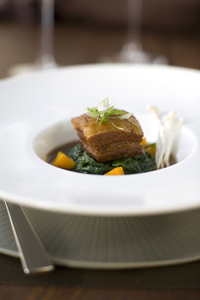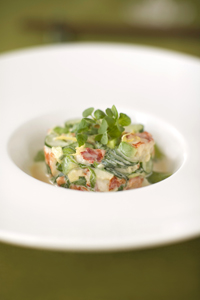Home » Asian for a New Generation » Soy Sauce in World Cuisines

Chinese cooks have had 2,500 years to explore the uses and nuances of soy sauce—they invented this fermented condiment that both preserved and flavored food. Later, the Japanese improved the recipe by adding wheat, which yields a more delicate taste. Even today, Chinese and Japanese soy sauces remain distinctly different.
Both cultures agree that soy sauce is truly the “master sauce” of Asia, fundamental to many Asian kitchens. Here are just a few of the many ways in which it is used:
In China:
In Japan:
In Korea:
In the American kitchen, soy sauce can be the secret weapon that gives dishes greater depth and complexity. With their new awareness of umami, many chefs and food scientists are reaching for soy sauce when a dish needs salt … plus a little something. They consider it a two-for-one ingredient that enhances flavor more than salt alone would.
Consider some of these possible uses for soy sauce in the American kitchen:


As you’ve learned, soy sauce contributes savory depth to many preparations—some of them not remotely Asian. We’ve gathered great recipes from celebrated chefs who use soy sauce in all menu parts, from appetizer to dessert. Their range is global—from Asian to Latin to Mediterranean—but soy sauce always fits. Click here to view recipes.
As you read or make these recipes, look carefully at how soy sauce works to add color to marinades, a lift to chutney, savory and salty notes to aioli or rich meatiness to mushrooms. Whether you’re preparing chicken cacciatore, prawn vindaloo, lamb shawarmas or vegetarian fajitas, ask yourself if a dash of soy sauce might help make the flavors bloom.
Consider some of these possible uses for soy sauce in the global kitchen:
Asian Cool® is a registered trademark of KIKKOMAN CORPORATION.
Hyde Park, NY Location
1946 Campus Dr. | Hyde Park, NY 12538
Maps & Directions
Napa, CA Location
500 First Street | Napa, CA 94559
Maps & Directions
Singapore Location
21 Tampines Ave 1 Block 31 | Singapore 529757
Maps & Directions
St. Helena, CA Location
2555 Main St. | St. Helena, CA 94574
Maps & Directions
San Antonio, TX Location
312 Pearl Pkwy, Bldg 3 | San Antonio, TX 78215
Maps & Directions